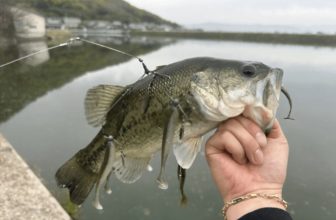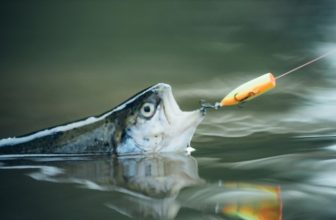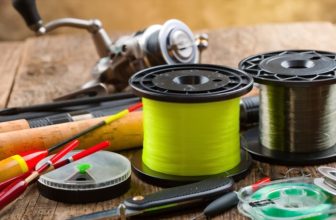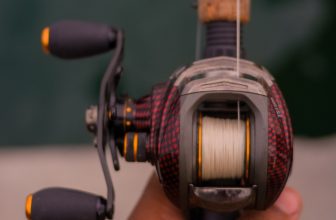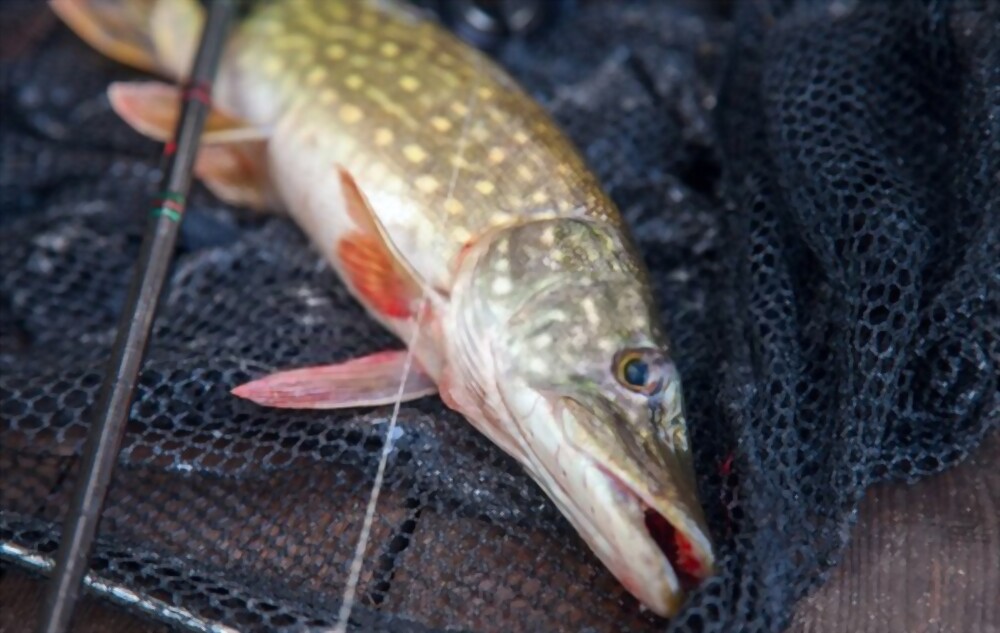
Pike Fishing Mastery: Maximizing Your Success With The Right Fishing Line!
Are you looking to up your pike fishing game? One of the biggest factors in your success is choosing the right fishing line.
With so many options on the market, it can be overwhelming to know which one to choose. But fear not, with a little understanding and knowledge, you can master the art of pike fishing and maximize your success on the water.
Choosing the right fishing line is crucial for a number of reasons. Firstly, it affects the sensitivity of your line, which is important when trying to detect those subtle bites from pike. Secondly, it impacts the strength and durability of your line, which is essential when fighting these powerful fish.
In this article, we’ll explore the different types of fishing lines available and the pros and cons of each. We’ll also cover the key factors to consider when choosing the best line for pike fishing, as well as provide essential tips for using the right fishing line to improve your skills on the water.
So, let’s dive in and become a pike fishing master!
Understanding the Importance of Choosing the Right Fishing Line
If you want to catch more pike, you gotta understand the importance of choosing the right fishing line! It’s not just about picking any line that you come across and hoping for the best.
No, it’s about selecting a line that is specifically meant for pike fishing. The right fishing line can make all the difference when it comes to maximizing your success.
When it comes to pike fishing, there are several factors to consider when choosing a fishing line. Firstly, you have to consider the strength of the line. Pike are known to be aggressive fish that will put up a tough fight when caught. Therefore, your fishing line needs to be strong and durable enough to handle the weight and power of the pike without breaking.
Secondly, you have to consider the visibility of the line. Pike have excellent eyesight, and they can easily detect anything that looks unnatural in the water. A highly visible line will make it easier for the pike to detect your bait, which may scare them away. Therefore, it’s recommended that you choose a low-visibility fishing line that blends in with the water.
Choosing the right fishing line for pike fishing can be the difference between a successful fishing trip and a disappointing one. Take the time to research and select a fishing line that is strong, durable, and low-visibility. Doing so will give you a better chance of catching more pike and mastering the art of pike fishing.
Types of Fishing Lines: Pros and Cons
You’ll want to consider the pros and cons of each type of line before making a decision. The three main types of fishing lines are monofilament, fluorocarbon, and braided lines.
Monofilament lines are the most popular and economical option. They are easy to handle and have good knot strength. However, they have a high stretch capacity which can make it harder to detect bites and set hooks.
Fluorocarbon lines are known for their invisibility in water. They have low stretch and excellent sensitivity, making it easier to detect bites and set hooks. However, they are more expensive than monofilament lines and can be more difficult to handle.
Braided lines are the strongest option and have no stretch, making it easier to set hooks and feel bites. However, they are not as invisible in water and can be more visible to fish.
When choosing a fishing line, it’s important to consider the type of fishing you will be doing, the species of fish you are targeting, and your personal preferences. Each type of line has its own strengths and weaknesses, so it’s important to weigh the pros and cons before making a decision.
With the right fishing line in hand, you’ll be on your way to mastering your pike fishing skills and maximizing your success on the water.
Factors to Consider When Choosing the Best Line for Pike Fishing
One important factor to consider when selecting the best line for pike angling is the type of water in which you’ll be fishing. If you plan on fishing in clear water, you’ll want to choose a line that is less visible, such as a fluorocarbon line. This type of line is virtually invisible underwater, which can increase your chances of catching a pike.
On the other hand, if you’re fishing in murky water, you may want to opt for a braided line. Braided lines are more visible, but they are also stronger and more durable, making them an excellent choice for fishing in rough waters.
Another factor to consider when choosing the best line for pike fishing is the size and strength of the line. Pike are powerful fish and can put up a strong fight, so you’ll want to choose a line that can withstand their strength. A line that is too thin or weak can easily break under the pressure of a pike. Additionally, a line that is too heavy can make it difficult to cast your bait accurately. You’ll want to choose a line that is strong enough to handle a pike, but still light enough to cast with ease.
Lastly, you’ll want to consider the length of the line you’ll be using. Longer lines can be beneficial when fishing in deeper waters, as they allow you to reach greater depths. However, longer lines can also be more challenging to cast accurately, so you’ll need to find a balance between length and ease of use. Additionally, longer lines can be more difficult to manage when reeling in a fish, so you’ll want to make sure you have the proper tools and techniques to handle a longer line.
Overall, choosing the right line for pike fishing requires careful consideration of the water type, line size and strength, and length of the line.
Essential Tips for Using the Right Fishing Line
To truly excel at angling, it’s important to understand which type of line is best suited for the specific body of water you’ll be fishing in. Here are some essential tips for using the right fishing line:
- Choose the Right Strength: Pike fishing requires a line that can handle the weight of a large fish. A line with a strength of at least 20lb test is recommended, but you may need to increase the strength depending on the size of the pike in the water.
- Monofilament: This type of line is popular among anglers because it’s easy to handle, and it’s affordable. It’s also ideal for beginners because it stretches, giving you time to set the hook.
- Braided Line: Braided line is strong and durable, making it ideal for pike fishing. It’s also thin, allowing you to cast further and feel bites more easily.
- Pay Attention to the Visibility: Pike have excellent vision and can be easily spooked by fishing lines that are too visible.
Fluorocarbon lines are a great choice because they are nearly invisible underwater.
- Fluorocarbon: This type of line is nearly invisible underwater, making it ideal for pike fishing. It’s also strong and durable, making it a great choice for fishing in rocky areas.
- Colored Lines: If you prefer to use colored lines, choose a color that matches the water you’ll be fishing in.
Green or blue lines are ideal for clear water, while yellow or orange lines are better for murky water.
By following these essential tips, you’ll be able to use the right fishing line for pike fishing and increase your chances of success. Remember to choose a line with the right strength and visibility, and pay attention to the body of water you’re fishing in. With these tips, you’ll be well on your way to mastering pike fishing!
Improving Your Pike Fishing Skills with the Right Line
Improving your skills in pike angling can be achieved by utilizing the appropriate type of fishing line. When it comes to pike fishing, the type of line you choose can make all the difference in the success of your fishing trip. The right line will help you cast further, detect bites more easily, and ultimately catch more fish.
One of the most important factors to consider when choosing a fishing line for pike is its strength. Pike are known for their strength and fighting power, so you need a line that can withstand their powerful strikes and runs. Look for a line that’s at least 20lb test or higher, preferably made of braided material, as it’s more durable and resistant to abrasions.
Another important factor to consider is the line’s visibility. Pike have excellent eyesight, so it’s essential to use a line that’s difficult for them to detect. Fluorocarbon lines are a great choice as they’re virtually invisible underwater, making it easier to fool the pike into biting. Additionally, a low-visibility line can also help in clear water conditions where pike can be more wary and cautious.
In conclusion, choosing the right fishing line is crucial to improving your pike fishing skills. By selecting a line that’s strong, durable, and invisible, you’ll increase your chances of catching more fish. Remember to always match your line to the conditions you’re fishing in and the size of the pike you’re targeting. With the right line, you’ll be well on your way to becoming a pike fishing master.
Frequently Asked Questions
What is the best time of day to go pike fishing?
The best time of day to go pike fishing is early morning or late evening when the water is cooler. Pike are most active during low light conditions and tend to hide during the midday heat.
Can I use the same fishing line for pike fishing as I do for other types of fish?
Yes, you can use the same fishing line for pike fishing as you do for other types of fish. However, it’s important to ensure that the line is strong enough to handle the weight and power of a pike.
How often should I replace my fishing line for pike fishing?
You should replace your fishing line for pike fishing regularly to avoid losing a big catch. It depends on how often you fish and the type of line you use, but a general rule is to replace it every season or after every few trips.
What is the best knot to use when tying my fishing line to my lure?
The best knot to tie your fishing line to your lure is the Palomar knot. It’s easy to tie and provides strong and reliable strength. Make sure to wet the knot before tightening it.
What are some common mistakes beginners make when choosing a fishing line for pike fishing?
When choosing a fishing line for pike fishing, beginners often make the mistake of using a line that is too light or too weak. This can result in losing the fish or damaging the line.
Conclusion
So there you have it, mastering pike fishing isn’t just about the right gear, but also the right fishing line.
Choosing the right line is crucial, and it can significantly impact your chances of success when it comes to catching pike.
By understanding the various types of lines, their pros and cons, and the factors to consider when selecting the best line for pike fishing, you can significantly improve your chances of success.
Remember, a good fishing line is an essential tool that can help you tackle the challenges of pike fishing.
So, take your time to research and experiment with different lines until you find the one that works best for you.
With the right line in your arsenal, you’ll undoubtedly improve your pike fishing skills and increase your chances of landing a trophy catch.
Happy fishing!



